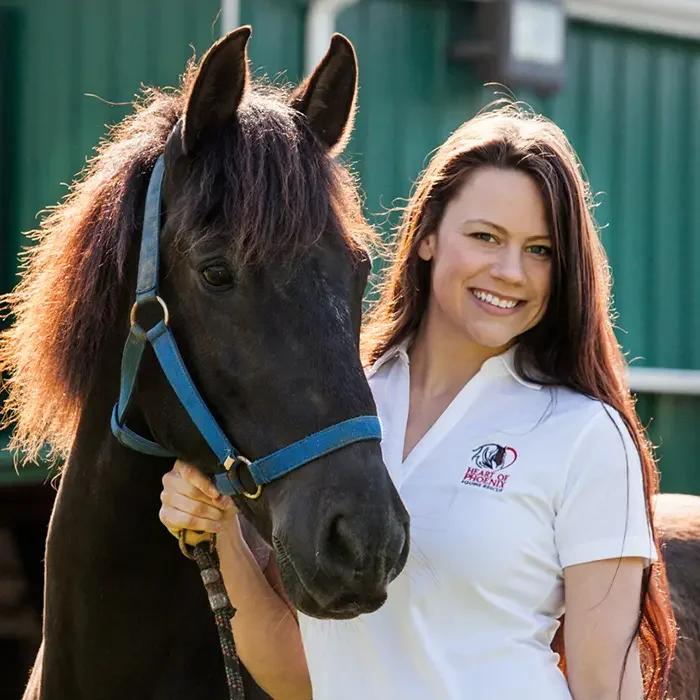Talking With Heart of Phoenix Equine Rescue About Euthanasia

Tinia Creamer
In this first of a two-part series on equine euthanasia we’re talking with Tinia Creamer, founder and president of Heart of Phoenix Equine Rescue.
Euthanasia is a decision that can be difficult to make but is one that should be made in a timely manner to ensure you’re doing what’s most humane for the animal. “We have waited, put it off and defied vet decisions in the past, operating on hope alone (and emotion), and we have typically regretted those choices,” notes Tinia Creamer of Heart of Phoenix (HOP) in Lesage, WV.
Following is a question and answer session we had with Creamer on the subject.
Download Heart of Phoenix's euthanasia policy.
ASPCA Pro: How does HOP make euthanasia decisions?
Creamer: If the decision concerns a serious medical condition or emergency and a veterinarian makes the euthanasia recommendation, we honor the knowledge of the vet. We think it is unwise to decide we know better than a trained medical professional.
If the situation is related to behavior, we leave the decision to a combination of a veterinarian, the director and any trainer(s) working with the horse in question. It typically doesn’t serve the horse to have a large number of people involved in the decision-making, as it may mean an emergency situation does not receive a timely answer. We leave it to those most directly involved. Fosters are not able to make these decisions, except in emergencies with a vet making a recommendation to euthanize.
We consider age, medical conditions, adoptability and behavior(s). We have an official euthanasia policy, but essentially ask: “Will this horse likely have excellent quality of life without medical management and be safe to handle?” when addressing health concerns, rehabilitation and training.
We try hard to explain that rescue simply means safe—and safe from pain or chronic issues can mean euthanasia.
ASPCA Pro: Has your decision-making process changed since your founding in 2012? If so, how?
Creamer: We have found that, emotionally and financially, a decision on euthanasia is better made in a timely manner. In the beginning, we did try to manage chronic and/or painful conditions, but as time went along, we could never see that this serves horses: either those in rescue or those waiting for help.
We have found, when veterinarians have given a grave prognosis, that normally when we have tried to go above and beyond we have overextended resources and put the horses through unwarranted pain—and the ending is often still euthanasia. We aim to make a reasonable choice in a timely manner now, to prevent undue suffering to horses, to aid other horses waiting in desperate need and to use our resources wisely.
Unsafe, unsound or chronically ill horses not only do not end up adopted, they are not living good lives.
ASPCA Pro: How do you communicate euthanasia decisions with staff, volunteers and the public?
Creamer: We are very candid during volunteer orientation about the euthanasia policy. We explain we are not a sanctuary and that we recognize how emotional euthanasia can be. We are very open about management of pain, chronic illness and the effects it can and does have on rescue and our mission.
ASPCA Pro: What else do you think is important to know about making euthanasia decisions?
Creamer: We try hard to explain that rescue simply means safe—and safe from pain or chronic issues can mean euthanasia. We do not want to make the decision to euthanize once a condition takes a serious turn and brings about suffering, either, so we try to make sure we make timely choices in the interest of preventing future downturns.
Horses live in the here and now, so if they hurt, cannot move freely or breathe easily, interact safely or get routine care without fear, we believe they are not being served fairly. Our job is to give all horses a chance to be safe, healthy and without fear.
I often ask, “to what end are we doing this,” when we face medical or behavioral issues in a horse. If the answer is, “to a painful life in a home,” then we proceed with euthanasia. If we feel they are not moving toward a pain-free life with an adopter, we have to ask whether we are operating in the horse’s best interest.
